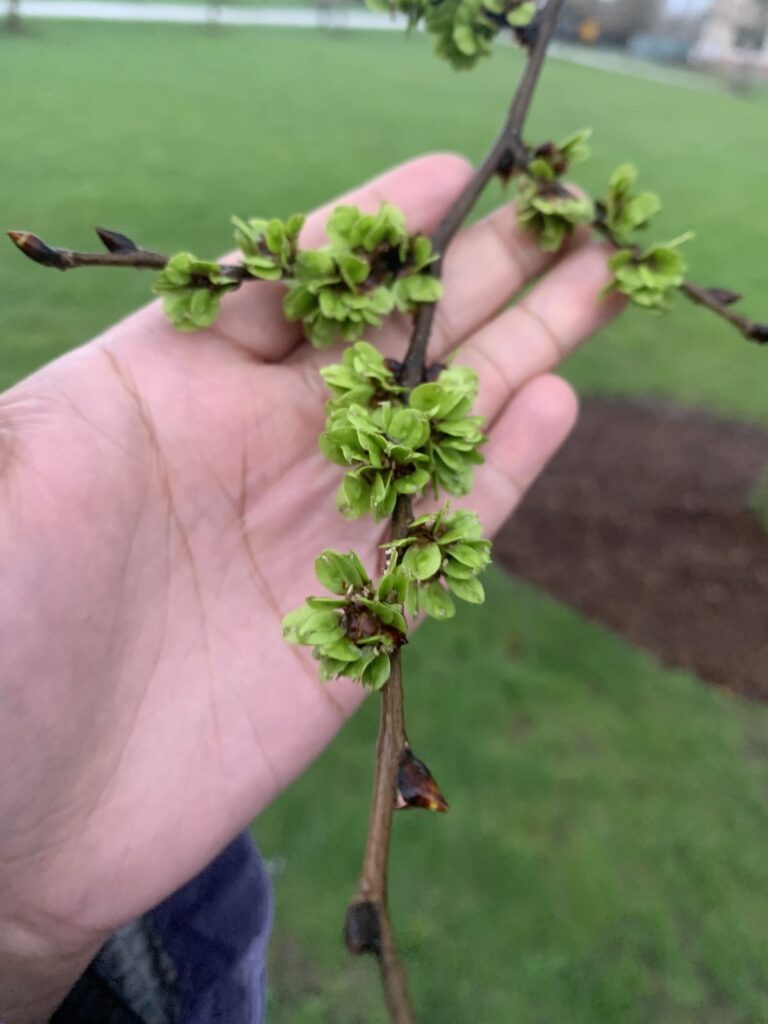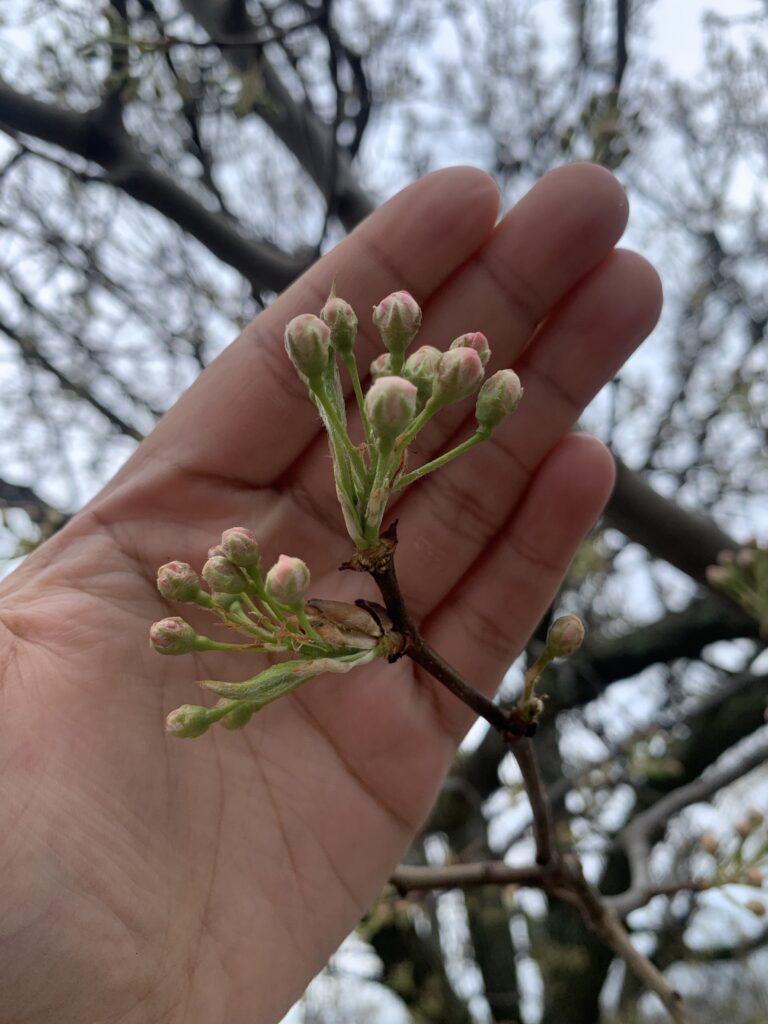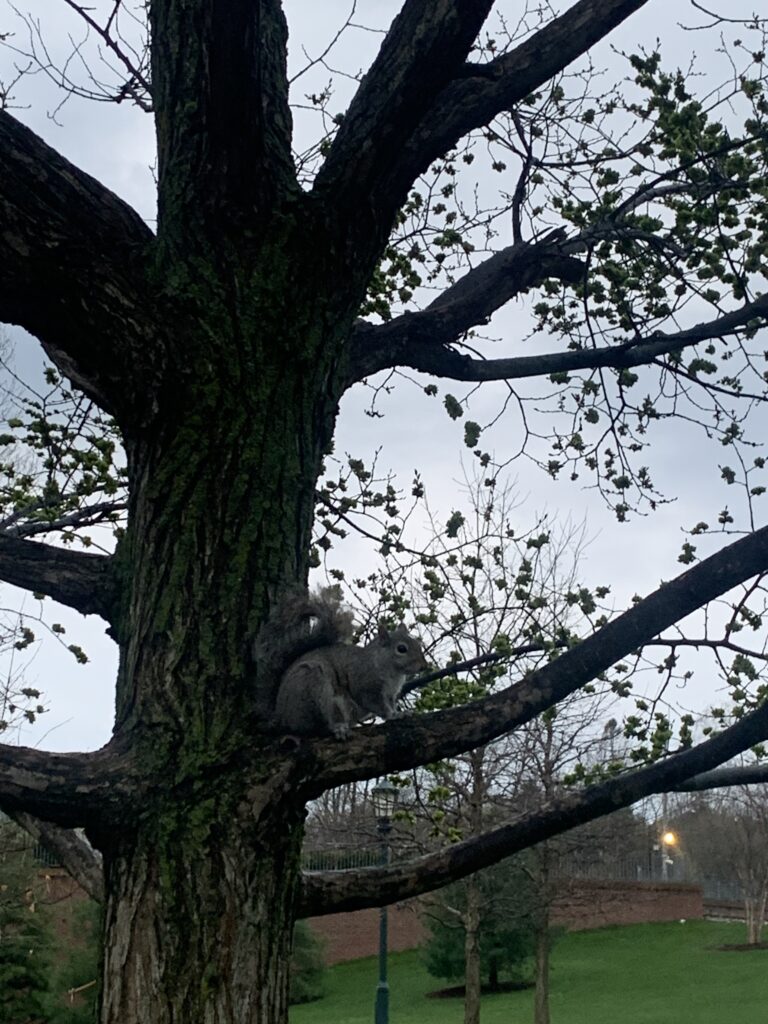


For the Burlington BioBlitz, I explored different parts of campus to see what kinds of trees are sprouting. In my observations, I was able to document 7 various tree species. Photographed above is one of them! Above are the buds of an Elm tree. The elm tree’s ability to grow across different landscapes makes it a perfect campus tree.
As I ventured toward central campus, near Howe Library, I observed many signs of emerging spring. The Callary Pear tree on the right had freshly sprouted buds that seemed to attract pollinators. As I watched the wildlife around the tree, the Common Eastern Bumble Bee was going to work pollinating the tree! At the same time, an Eastern Grey Squirrel was roaming the trees for acorns.
My experience using iNaturalist was surprising in how captivating it was to see everyone hone in on the signs of spring all around us. I think iNaturalist has provided us a way to develop our understanding of the land and all of it’s magic that it can do. Not only this, but it allows us to share it with people from all around the globe which I think is fascinating. (This is not an iNaturalist sponsorship though). I was able to follow my curiosity into the Amazon in Brazil. I found a post about Hoffman’s Two-toed Sloth, which was incredible to see. iNaturalist allows us to observe wildlife from other areas of the globe. This was fascinating to me because it led me to think about how my actions in my day-to-day life, affect wildlife in areas I might not have close proximity to. Overall my experience with iNaturalist grounded me and brought me back to zoomorphism.